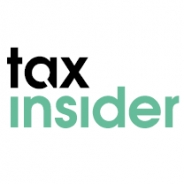
Malcolm Finney provides an overview of two different types of trust for Tax Insider.
Introduction - Trusts are Still Useful!
Trusts have been used for tax planning purposes for many years, and continue to be used despite their tax effectiveness arguably having been seriously eroded in the past few years. This is probably because trusts also offer significant non-tax advantages with respect to planning for family succession and provision purposes.
Trusts are typically set up in lifetime (so-called ‘inter vivos’ trusts) or on death under an individual’s will (so-called ‘will trusts’). The Finance Act 2006 made significant changes to the Inheritance Tax (IHT) treatment of trusts. It is therefore important to identify whether a trust is set up before, on or after 22 March 2006 (when the law changed).
Trusts Set Up Before 22 March 2006
For IHT purposes such trusts are divided into two categories, namely Relevant Property Trusts (RPTs) and Qualifying Interest In Possession Trusts (QIIPTs).
Relevant Property Trusts
The typical RPT is the discretionary trust (a trust where the trustees decide how and when to share out the capital and income of the trust amongst the beneficiaries).
The transfer of property into trust on set up may give rise to an IHT charge at 20% of the value of the property transferred. Once the property is in the trust, an IHT charge arises every ten years on the value of the trust property and an ‘exit charge' arises as and when property leaves the trust. 6% is the maximum ten yearly charge and 5.85% the maximum exit charge (although both may be much lower).
Many RPTs are so-called Nil Rate Band (NRB) trusts. An NRB trust is where the individual setting up the trust transfers no more than £325,000 (i.e., the amount which currently attracts zero IHT) into the trust, having made no other chargeable transfers in the previous seven years. No IHT charge arises on set up, and subsequent ten yearly and exit charges are kept to an absolute minimum. Such trusts can thus be very IHT effective.
Qualifying Interest in Possession Trusts
Unlike the RPT, a QIIPT (a trust where usually one beneficiary receives all the income of the trust and on their death the trust capital is shared out amongst other beneficiaries) is not subject to the above ten yearly and exit charges; transfers of property on set up are subject to IHT but only if the individual dies within seven years and their NRB (£325,000) has been exceeded (thus, no IHT may arise on the transfer on set up).
However, the beneficiary who is entitled to the trust income (i.e., the qualifying interest in possession beneficiary) is treated for IHT purposes (only) as if he/she owned the trust property (which in the real world he/she does not); thus, on death, the trust property is added to the beneficiary’s own property and IHT levied thereon at 40%, which is not particularly advantageous. This, however, is not the position with respect to the RPT.
Trusts Set Up On or After 22 March 2006
Basically, all lifetime trusts set up on or after 22 March 2006 are now treated as RPTs and the RPT treatment outlined above applies (thus, even a trust set up in which a beneficiary has an interest in possession is treated as an RPT, the interest in possession now being a non-qualifying not a qualifying interest).
The only trusts set up on or after 22 March 2006 which can now be treated as a QIIPTs (i.e., the same as a pre 22 March 2006 QIIPT) are those set up under a will (i.e., a will trust), or trusts for disabled persons.
Possible Trust Uses
For a married couple (or an unmarried individual) with children, a discretionary trust (i.e., an RPT) offers significant flexibility allowing trustees to take into account future unforeseen events; if the trust is a NRB trust, IHT charges are also kept to an absolute minimum.
For a married couple, one or both of whom have been married before and who have children from a former marriage, a QIIPT set up under the will of the first spouse to die may give the surviving spouse an interest in possession (qualifying) which gives him or her the trust income for life but preserves the trust capital for distribution to the children on the spouse’s death (so it can prevent the spouse from squandering the capital).
Practical Tip
Trusts can offer significant IHT savings and permit effective future family planning. The key is to ensure that the type of trust chosen meets the individual’s real world objectives and the IHT tail should not be allowed to wag the trust dog.



Please register or log in to add comments.
There are not comments added